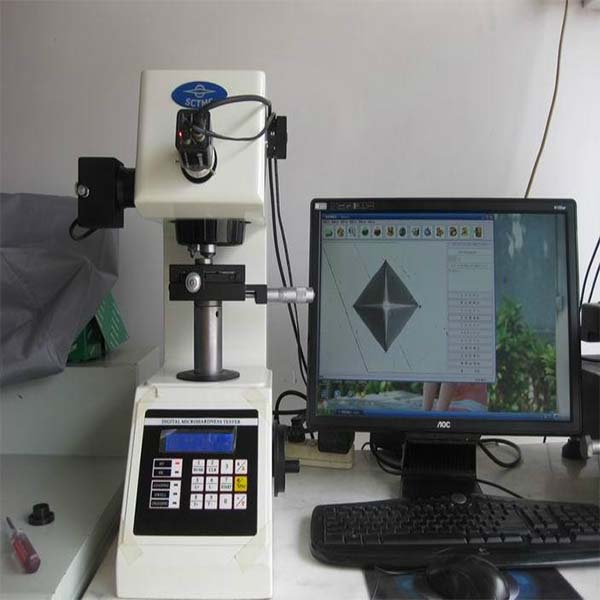- Need Help?
- +86 182 9175 5582
- info@ti-screws.com
Hardness of metal materials

The purpose of forging
January 19, 2023
Heat treatment of titanium alloy
February 28, 2023Hardness indicates the ability of a material to resist pressing a hard object into its surface.
It is one of the important performance indicators of metal materials.
Generally, the higher the hardness, the better the wear resistance.
Commonly used hardness indicators are Brinell hardness, Rockwell hardness and Vickers hardness.

Brinell hardness (HB):
Press a hardened steel ball of a certain size (generally 10mm in diameter) into the surface of the material with a certain load (generally 3000kg) and keep it for a period of time.
After the load is removed, the ratio of the load to the indentation area, It is the Brinell hardness value (HB), and the unit is kgf/mm2 (N/mm2).
Rockwell hardness (HR):
When HB>450 or the sample is too small, the Brinell hardness test cannot be used and the Rockwell hardness measurement can be used instead.
It uses a diamond cone with a vertex angle of 120° or a steel ball with a diameter of 1.59mm and 3.18mm to press into the surface of the material to be tested under a certain load, and the hardness of the material is obtained from the depth of the indentation.
Depending on the hardness of the test material, different indenters and total test pressures can be used to form several different Rockwell hardness scales. Each scale is marked with a letter after the Rockwell hardness symbol HR.
Commonly used Rockwell hardness scales are A, B, and C (HRA, HRB, HRC). Among them, the C scale is the most widely used.
HRA: It is the hardness obtained by using a 60kg load diamond cone indenter, and it is used for materials with extremely high hardness.
HRB: It is the hardness obtained by using a 100kg load and a hardened steel ball with a diameter of 1.58mm, and is used for materials with lower hardness.
HRC: It is the hardness obtained by using a 150kg load and a diamond cone indenter, and is used for materials with high hardness.
Vickers hardness (HV):
Press the diamond square cone indenter with a load of less than 120kg and a vertex angle of 136° into the surface of the material, and divide the surface area of the indentation pit by the load value, which is the Vickers hardness value ( HV).
Hardness test is the simplest and most feasible test method in mechanical performance test.
In order to replace certain mechanical performance tests with hardness tests, a more accurate conversion relationship between hardness and strength is required in production.
Practice has proved that there is an approximate corresponding relationship between various hardness values of metal materials, and between hardness values and strength values.
Because the hardness value is determined by the initial plastic deformation resistance and the continued plastic deformation resistance, the higher the strength of the material, the higher the plastic deformation resistance, and the higher the hardness value.
